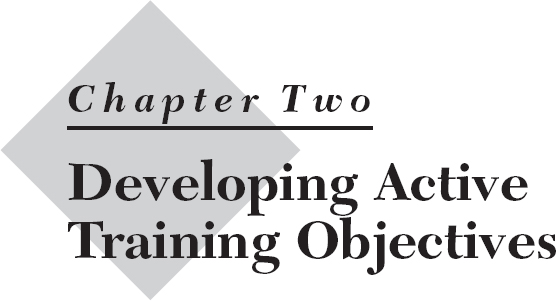
After assessing participants, you are in a position to start planning your training program. At this stage, it is not enough to simply list the topics you intend to cover. An active training program is constructed in terms of the achievement of objectives. The critical question, therefore, is not what topics to cover but what you want participants to value, understand, or do with those topics. A clear sense of where you want to go and what you are trying to accomplish is the single most important ingredient for designing active training programs.
Determining training objectives may take long-term thinking up front, but it is worth it. Objectives are the pillars of your program, not constraints. The single best reason to work hard on developing training objectives is that objectives drive your training design. When you are designing a training program, you are figuring out what steps will lead to the accomplishment of your objectives. If you are not clear about your objectives, you might overlook some of the learning experiences that your participants require. Here is a case in point.
EXAMPLE: A trainer's assessment revealed that a group of real estate sales learners knew little about the closing process in the sale of properties. Consequently, the trainer decided to cover this topic in his real estate course. He did a good job of explaining how a closing is done, but afterward participants ...
Get Active Training: A Handbook of Techniques, Designs, Case Examples, and Tips, 4th Edition now with the O’Reilly learning platform.
O’Reilly members experience books, live events, courses curated by job role, and more from O’Reilly and nearly 200 top publishers.

